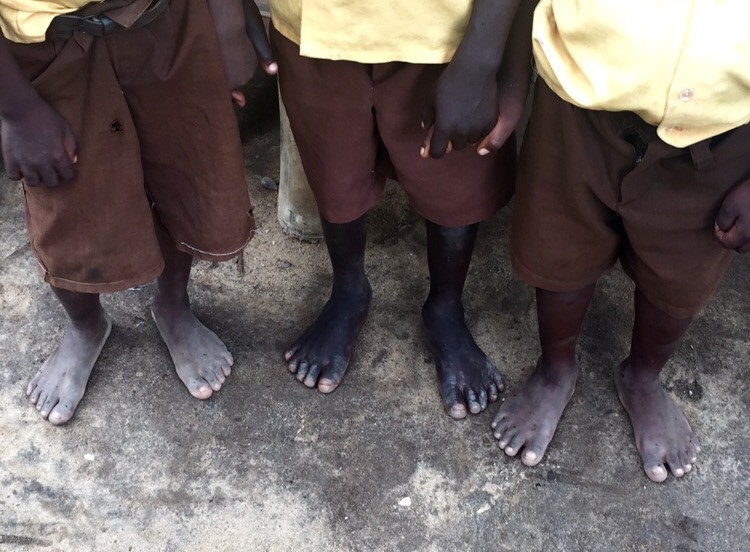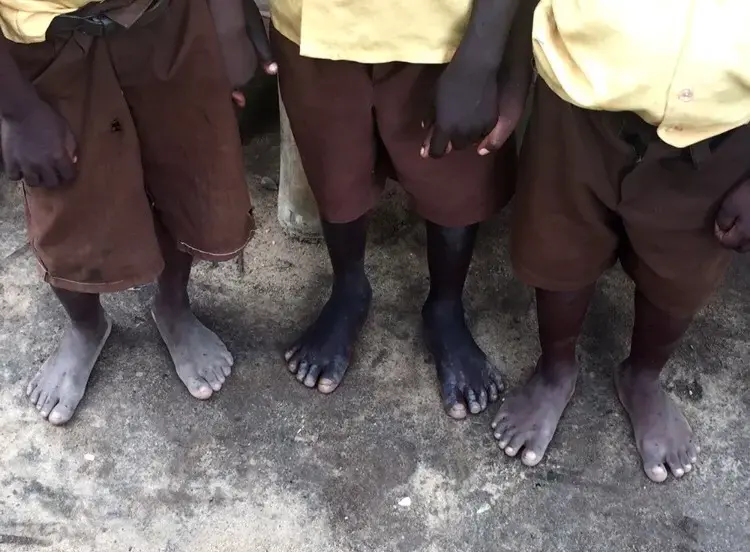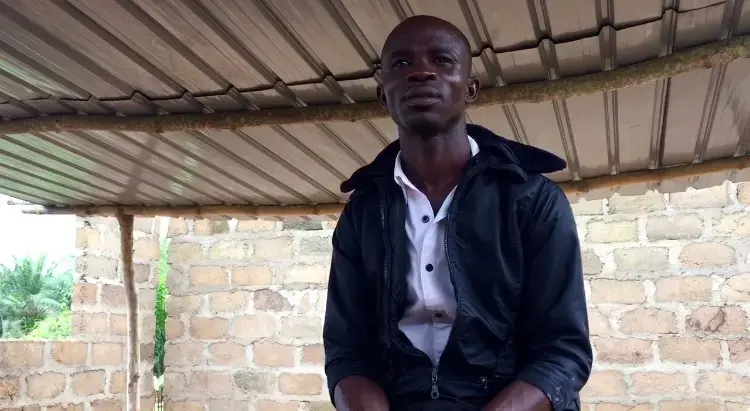PONKROM, CAPE COAST, Ghana—It's around noon on a Wednesday and headmaster Mensah Kwame is making his usual rounds of "classrooms" at his school in Ponkrom, a small, family-oriented community. He stops by each class, checks in on the teachers, and sees what the children are learning that day.
This is Kwame's second year as headmaster of the school. When asked if he enjoys his job, he laughs and says every day he faces severe obstacles that are beyond frustrating. He constantly toys with the idea of quitting, but can never actually get himself to do so because of the children.
The school is set on top of a hill. Only one classroom has a roof on it. Some have cement floors, but others just have dirt on the ground. There is no running water or electricity at the school—daylight time is crucial. The teachers are all government paid and some walk three miles per day to get to school.
The children who range in age from 4 to 17 learn everything from math, science, art, and literature. Around the age of 7 they begin to learn English. Many have hopes of attending college and visiting the United States.
Children are required to wear uniforms and shoes but many cannot afford this. Some are clothed in hand-me-downs, worn, dirty and with many holes. Bare feet are common: "The children do not normally come to school with shoes—just only barefooted," Kwame says.
The main reason for not having shoes is cost, Kwame says. Even if families are able to afford shoes they frequently only have one pair—they save wearing them for special occasions, such as church. Those fortunate enough to have shoes wear tattered flip-flops that barely stay on their feet as they play. "Some of them—they will wear some to school but when they go to the house they won't wear them so they will get an [infection] at the house and bring it to the school," Kwame explains. The floors of their homes are just as bad, if not worse, than the school grounds: dirt, mud and insect-ridden.
At school the children have a half hour each day to run around and play games like tag and soccer. There are many sticks on the ground, a river nearby, and grass two-feet tall. Because of this, the children often get hurt, especially on their feet.
The most frequent injury Kwame sees are cuts and scrapes covering their toes and the bottoms of their feet: "They normally get wounds from the roots of the tree." Eventually the foot flattens and widens out from not wearing proper footwear. Toenails are cracked down the center, cuts are infected and oozing with puss, and their ankles weakened. Because there is no running water, the children defecate in the woods and others are exposed to it, Kwame says. Animals roam around and interact with the children as well: Where they walk, children walk.
During the hot months temperatures can reach over a hundred degrees. Children like to run to the stream to cool down and play in the water. But what's in that water can be toxic. Kwame explains that it's not uncommon for a worm to enter the bottom of a child's foot through an open wound. A report published by Samaritan's Feet, a non-profit that promotes and supports the use of footwear in developing countries, notes: "Children sometimes swim in parasite-infested waters, and in the absence of suitable drinking water, people may be forced to drink it and use it for cooking purposes. Amongst the poorest of the poor, parasitic infection is a vicious cycle."
As a result, children develop fever, have severe diarrhea, vomiting and pain. Ringworm is common, along with parasites. As explained in the Samaritan's Feet report, the common diseases of soil-transmitted helminth, hookworm, schistosomiasis and tungiasis are associated with not wearing shoes. They are caused by parasites and fleas in impoverished areas. These all result in side effects such as those Kwame mentioned: fever, diarrhea and abdominal pain. What is often disregarded are the long-term effects--slow growth, mental development, damage to the liver, and even death.
When the children's cuts get infected they begin to itch. Kids often use sticks to soothe the irritation, but not only does this make the injury worse, it's also a distraction to them and the children around them. Eventually, the wounds smell—it's a constant cycle. "It's difficult for teaching because when we are teaching the children they will start scratching the wounds. There's a lot of flies disturbing them all day," Kwame says.
Ghanaians turn first to natural products, such as aloe, but they will also use gasoline to heal and soothe pain.
Although there's an easy solution, families often cannot provide a simple pair of shoes, Kwame explains.
As kids come running by, one latches on to Kwame. The headmaster concludes the interview with a plea for help, of any sort, as he leads the shoeless little girl back to the others.










